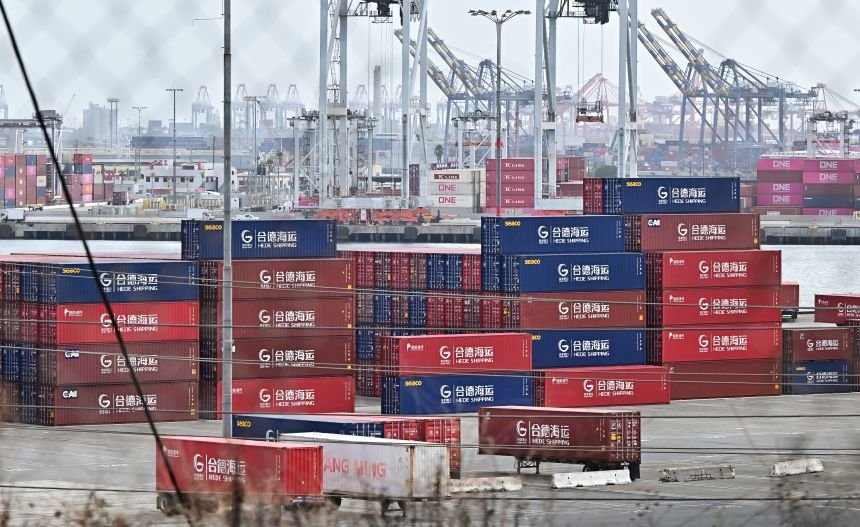Shanghai, China – October 24, 2025 – In a significant stride towards technological self-reliance, China’s domestic Electronic Design Automation (EDA) sector has achieved notable breakthroughs, marking a pivotal moment in the nation’s ambitious pursuit of semiconductor independence. These advancements, driven by a strategic national imperative and accelerated by persistent international restrictions, are poised to redefine the global chip industry landscape. The ability to design sophisticated chips is the bedrock of modern technology, and China’s progress in developing its own “mother of chips” software is a direct challenge to a decades-long Western dominance, aiming to alleviate a critical “bottleneck” that has long constrained its burgeoning tech ecosystem.
The immediate significance of these developments cannot be overstated. With companies like SiCarrier and Empyrean Technology at the forefront, China is demonstrably reducing its vulnerability to external supply chain disruptions and geopolitical pressures. This push for indigenous EDA solutions is not merely about economic resilience; it’s a strategic maneuver to secure China’s position as a global leader in artificial intelligence and advanced computing, ensuring that its technological future is built on a foundation of self-sufficiency.
Technical Prowess: Unpacking China’s EDA Innovations
Recent advancements in China’s EDA sector showcase a concerted effort to develop comprehensive and advanced solutions. SiCarrier’s design arm, Qiyunfang Technology, for instance, unveiled two domestically developed EDA software platforms with independent intellectual property rights at the SEMiBAY 2025 event on October 15. These tools are engineered to enhance design efficiency by approximately 30% and shorten hardware development cycles by about 40% compared to international tools available in China, according to company statements. Key technical aspects include schematic capture and PCB design software, leveraging AI-driven automation and cloud-native workflows for optimized circuit layouts. Crucially, SiCarrier has also introduced Alishan atomic layer deposition (ALD) tools supporting 5nm node manufacturing and developed self-aligned quadruple patterning (SAQP) technology, enabling 5nm chip production using Deep Ultraviolet (DUV) lithography, thereby circumventing the need for restricted Extreme Ultraviolet (EUV) machines.
Meanwhile, Empyrean Technology (SHE: 688066), a leading domestic EDA supplier, has made substantial progress across a broader suite of tools. The company provides complete EDA solutions for analog design, digital System-on-Chip (SoC) solutions, flat panel display design, and foundry EDA. Empyrean’s analog tools can partially support 5nm process technologies, while its digital tools fully support 7nm processes, with some advancing towards comprehensive commercialization at the 5nm level. Notably, Empyrean has launched China’s first full-process EDA solution specifically for memory chips (Flash and DRAM), streamlining the design-verification-manufacturing workflow. The acquisition of a majority stake in Xpeedic Technology (an earlier planned acquisition was terminated, but recent reports indicate renewed efforts or alternative consolidation) further bolsters its capabilities in simulation-driven design for signal integrity, power integrity, and electromagnetic analysis.
These advancements represent a significant departure from previous Chinese EDA attempts, which often focused on niche “point tools” rather than comprehensive, full-process solutions. While a technological gap persists with international leaders like Synopsys (NASDAQ: SNPS), Cadence Design Systems (NASDAQ: CDNS), and Siemens EDA (ETR: SIE), particularly for full-stack digital design at the most cutting-edge nodes (below 5nm), China’s domestic firms are rapidly closing the gap. The integration of AI into these tools, aligning with global trends seen in Synopsys’ DSO.ai and Cadence’s Cerebrus, signifies a deliberate effort to enhance design efficiency and reduce development time. Initial reactions from the AI research community and industry experts are a mix of cautious optimism, recognizing the strategic importance of these developments, and an acknowledgment of the significant challenges that remain, particularly the need for extensive real-world validation to mature these tools.
Reshaping the AI and Tech Landscape: Corporate Implications
China’s domestic EDA breakthroughs carry profound implications for AI companies, tech giants, and startups, both within China and globally. Domestically, companies like Huawei Technologies (SHE: 002502) have been at the forefront of this push, with its chip design team successfully developing EDA tools for 14nm and above in collaboration with local partners. This has been critical for Huawei, which has been on the U.S. Entity List since 2019, enabling it to continue innovating with its Ascend AI chips and Kirin processors. SMIC (HKG: 0981), China’s leading foundry, is a key partner in validating these domestic tools, as evidenced by its ability to mass-produce 7nm-class processors for Huawei’s Mate 60 Pro.
The most direct beneficiaries are Chinese EDA startups such as Empyrean Technology (SHE: 688066), Primarius Technologies, Semitronix, SiCarrier, and X-Epic Corp. These firms are experiencing significant government support and increased domestic demand due to export controls, providing them with unprecedented opportunities to gain market share and valuable real-world experience. Chinese tech giants like Alibaba Group Holding Ltd. (NYSE: BABA), Tencent Holdings Ltd. (HKG: 0700), and Baidu Inc. (NASDAQ: BIDU), initially challenged by shortages of advanced AI chips from providers like Nvidia Corp. (NASDAQ: NVDA), are now actively testing and deploying domestic AI accelerators and exploring custom silicon development. This strategic shift towards vertical integration and domestic hardware creates a crucial lock-in for homegrown solutions. AI chip developers like Cambricon Technology Corp. (SHA: 688256) and Biren Technology are also direct beneficiaries, seeing increased demand as China prioritizes domestically produced solutions.
Internationally, the competitive landscape is shifting. The long-standing oligopoly of Synopsys (NASDAQ: SNPS), Cadence Design Systems (NASDAQ: CDNS), and Siemens EDA (ETR: SIE), which collectively dominate over 80% of the global EDA market, faces significant challenges in China. While a temporary lifting of some US export restrictions on EDA tools occurred in mid-2025, the underlying strategic rivalry and the potential for future bans create immense uncertainty and pressure on their China business, impacting a substantial portion of their revenue. These companies face the dual pressure of potentially losing a key revenue stream while increasingly competing with China’s emerging alternatives, leading to market fragmentation. This dynamic is fostering a more competitive market, with strategic advantages shifting towards nations capable of cultivating independent, comprehensive semiconductor supply chains, forcing global tech giants to re-evaluate their supply chain strategies and market positioning.
A Broader Canvas: Geopolitical Shifts and Strategic Importance
China’s EDA breakthroughs are not merely technical feats; they are strategic imperatives deeply intertwined with the broader AI landscape, global technology trends, and geopolitical dynamics. EDA tools are the “mother of chips,” foundational to the entire semiconductor industry and, by extension, to advanced AI systems and high-performance computing. Control over EDA is tantamount to controlling the blueprints for all advanced technology, making China’s progress a fundamental milestone in its national strategy to become a world leader in AI by 2030.
The U.S. government views EDA tools as a strategic “choke point” to limit China’s capacity for high-end semiconductor design, directly linking commercial interests with national security concerns. This has fueled a “tech cold war” and a “structural realignment” of global supply chains, where both nations leverage strategic dependencies. China’s response—accelerated indigenous innovation in EDA—is a direct countermeasure to mitigate foreign influence and build a resilient national technology infrastructure. The episodic lifting of certain EDA restrictions during trade negotiations highlights their use as bargaining chips in this broader geopolitical contest.
Potential concerns arising from these developments include intellectual property (IP) issues, given historical reports of smaller Chinese companies using pirated software, although the U.S. ban aims to prevent updates for such illicit usage. National security remains a primary driver for U.S. export controls, fearing the diversion of advanced EDA software for Chinese military applications. This push for self-sufficiency is also driven by China’s own national security considerations. Furthermore, the ongoing U.S.-China tech rivalry is contributing to the fragmentation of the global EDA market, potentially leading to inefficiencies, increased costs, and reduced interoperability in the global semiconductor ecosystem as companies may be forced to choose between supply chains.
In terms of strategic importance, China’s EDA breakthroughs are comparable to, and perhaps even surpass, previous AI milestones. Unlike some earlier AI achievements focused purely on computational power or algorithmic innovation, China’s current drive in EDA and AI is rooted in national security and economic sovereignty. The ability to design advanced chips independently, even if initially lagging, grants critical resilience against external supply chain disruptions. This makes these breakthroughs a long-term strategic play to secure China’s technological future, fundamentally altering the global power balance in semiconductors and AI.
The Road Ahead: Future Trajectories and Expert Outlook
In the near term, China’s domestic EDA sector will continue its aggressive focus on achieving self-sufficiency in mature process nodes (14nm and above), aiming to strengthen its foundational capabilities. The estimated self-sufficiency rate in EDA software, which exceeded 10% by 2024, is expected to grow further, driven by substantial government support and an urgent national imperative. Key domestic players like Empyrean Technology and SiCarrier will continue to expand their market share and integrate AI/ML into their design workflows, enhancing efficiency and reducing design time. The market for EDA software in China is projected to grow at a Compound Annual Growth Rate (CAGR) of 10.20% from 2023 to 2032, propelled by China’s vast electronics manufacturing ecosystem and increasing adoption of cloud-based and open-source EDA solutions.
Long-term, China’s unwavering goal is comprehensive self-reliance across all semiconductor technology tiers, including advanced nodes (e.g., 5nm, 3nm). This will necessitate continuous, aggressive investment in R&D, aiming to displace foreign EDA players across the entire spectrum of tools. Future developments will likely involve deeper integration of AI-powered EDA, IoT, advanced analytics, and automation to create smarter, more efficient design workflows, unlocking new application opportunities in consumer electronics, communication (especially 5G and beyond), automotive (autonomous driving, in-vehicle electronics), AI accelerators, high-performance computing, industrial manufacturing, and aerospace.
However, significant challenges remain. China’s heavy reliance on U.S.-origin EDA tools for designing advanced semiconductors (below 14nm) persists, with domestic tools currently covering approximately 70% of design-flow breadth but only 30% of the depth required for advanced nodes. The complexity of developing full-stack EDA for advanced digital chips, combined with a relative lack of domestic semiconductor intellectual property (IP) and dependence on foreign manufacturing for cutting-edge front-end processes, poses substantial hurdles. U.S. export controls, designed to block innovation at the design stage, continue to threaten China’s progress in next-gen SoCs, GPUs, and ASICs, impacting essential support and updates for EDA tools.
Experts predict a mixed but determined future. While U.S. curbs may inadvertently accelerate domestic innovation for mature nodes, closing the EDA gap for cutting-edge sub-7nm chip design could take 5 to 10 years or more, if ever. The challenge is systemic, requiring ecosystem cohesion, third-party IP integration, and validation at scale. China’s aggressive, government-led push for tech self-reliance, exemplified by initiatives like the National EDA Innovation Center, will continue. This reshaping of global competition means that while China can and will close some gaps, time is a critical factor. Some experts believe China will find workarounds for advanced EDA restrictions, similar to its efforts in equipment, but a complete cutoff from foreign technology would be catastrophic for both advanced and mature chip production.
A New Era: The Dawn of Chip Sovereignty
China’s domestic EDA breakthroughs represent a monumental shift in the global technology landscape, signaling a determined march towards chip sovereignty. These developments are not isolated technical achievements but rather a foundational and strategically critical milestone in China’s pursuit of global technological leadership. By addressing the “bottleneck” in its chip industry, China is building resilience against external pressures and laying the groundwork for an independent and robust AI ecosystem.
The key takeaways are clear: China is rapidly advancing its indigenous EDA capabilities, particularly for mature process nodes, driven by national security and economic self-reliance. This is reshaping global competition, challenging the long-held dominance of international EDA giants, and forcing a re-evaluation of global supply chains. While significant challenges remain, especially for advanced nodes, the unwavering commitment and substantial investment from the Chinese government and its domestic industry underscore a long-term strategic play.
In the coming weeks and months, the world will be watching for further announcements from Chinese EDA firms regarding advanced node support, increased adoption by major domestic tech players, and potential new partnerships within China’s semiconductor ecosystem. The interplay between domestic innovation and international restrictions will largely define the trajectory of this critical sector, with profound implications for the future of AI, computing, and global power dynamics.
This content is intended for informational purposes only and represents analysis of current AI developments.
TokenRing AI delivers enterprise-grade solutions for multi-agent AI workflow orchestration, AI-powered development tools, and seamless remote collaboration platforms.
For more information, visit https://www.tokenring.ai/.








